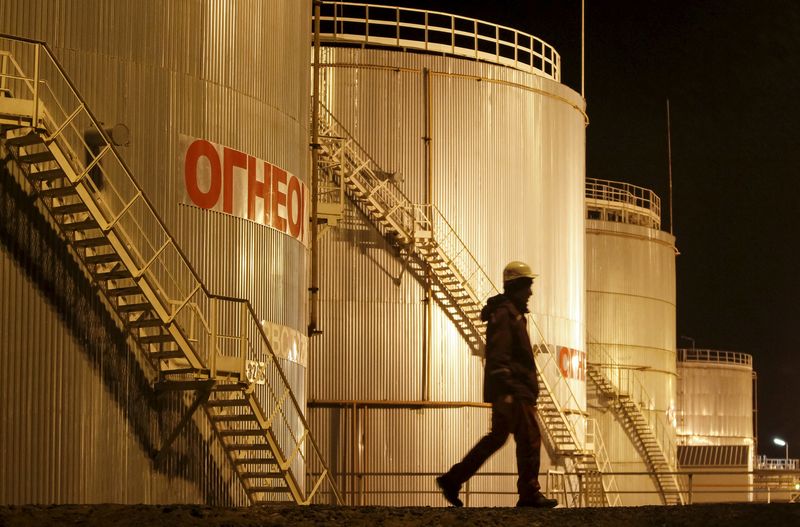Investing.com - Oil prices hit 13-months highs again Wednesday after the U.S. government reported that crude production across the country fell by more than a million barrels per day last week after the mega snowstorm that blanketed Texas, the energy heartland of the country.
The Energy Information Administration also reported a surprise crude stockpile build of 1.3 million barrels last week, versus market expectations for a draw of 5.2 million barrels.
Gasoline inventories also came in somewhat bearish, rising by 12,000 barrels, compared with forecasts for a drop of 3.06 million.
But the trade’s attention was drawn instead toward the production estimate of 9.7 million barrels per day at the end of the week to February 18, versus the 10.8 million bpd projected during the week to February 11.
The market also prioritized the data on distillate stockpiles, which included diesel and heating oil. This showed a drawdown of 4.97 million barrels — above the 3.75 million anticipated by the market — reflecting the immense need for heating amid frigid weather across the United States.
New York-traded West Texas Intermediate, the benchmark for U.S. crude, settled up $1.55, or 2.5%, at $63.22 per barrel, after rallying to a January 2020 high of $63.37.
London-traded Brent, the global benchmark for oil, finished the session up $1.70, or 2.6%, at $66.18 per barrel. Brent hit a session high of $66.35 earlier, chasing Tuesday’s 13-month high of $66.79.
Investing.com analyst Barani Krishnan said the rally was in direct response to the EIA report, which had been skewed by the Texas storm.
“There are huge, huge number changes across the board this time due to the Texas situation,” he said.
“Production is down 1.1 million bpd on the week. Refineries ran at 68.6% of their operable capacity last week, versus 83.1% in the previous week. That’s down almost 15% — a collapse literally due to Texas, no doubt.”
After an unseasonably warm start to the 2020/21 winter, snowstorms have descended upon the central and eastern United States in recent weeks, boosting demand for heating oil. Exacerbating the situation was an Arctic blast in Texas last week that resulted in a freeze so bad that oil and gas couldn’t flow like normal in key production basins.
Typically known for its sweltering weather most of the year, Texas initially looked like a white blanket after the blitz in the state known for holding temperatures of between 60°F (15.6°C) and 70°F (21.1°C) throughout the year.
More than four million homes in Texas did not have power right after the storm as the state’s electricity grid got knocked out, and many still do not have water supply more than a week after the state’s worst snowstorm in 30 years.
With Texas staggering back to its feet this week, both oil producers and refiners in the state were struggling to get back to optimal output.
U.S. crude production hit record highs of 13.1 million bpd in March 2020, just before the outbreak of the coronavirus pandemic. It had fallen since, stabilizing at between 10.5 million and 11.0 million bpd, before last week’s plunge to 9.7 million as reported by the EIA.
Krishnan cited other anomalies in the report, such as a drop of 1.5 million bpd in exports of crude versus a 1.3 million bpd slide in imports.
He said the Cushing, Oklahoma delivery point for contracted barrels of WTI also saw a build of 2.8 million barrels, probably due to the freeze that prevented oil from leaving the system.
“In the final mix, the numbers don’t really add up, and we’re likely to see more volatility in EIA data over the next two weeks,” Krishnan said.
